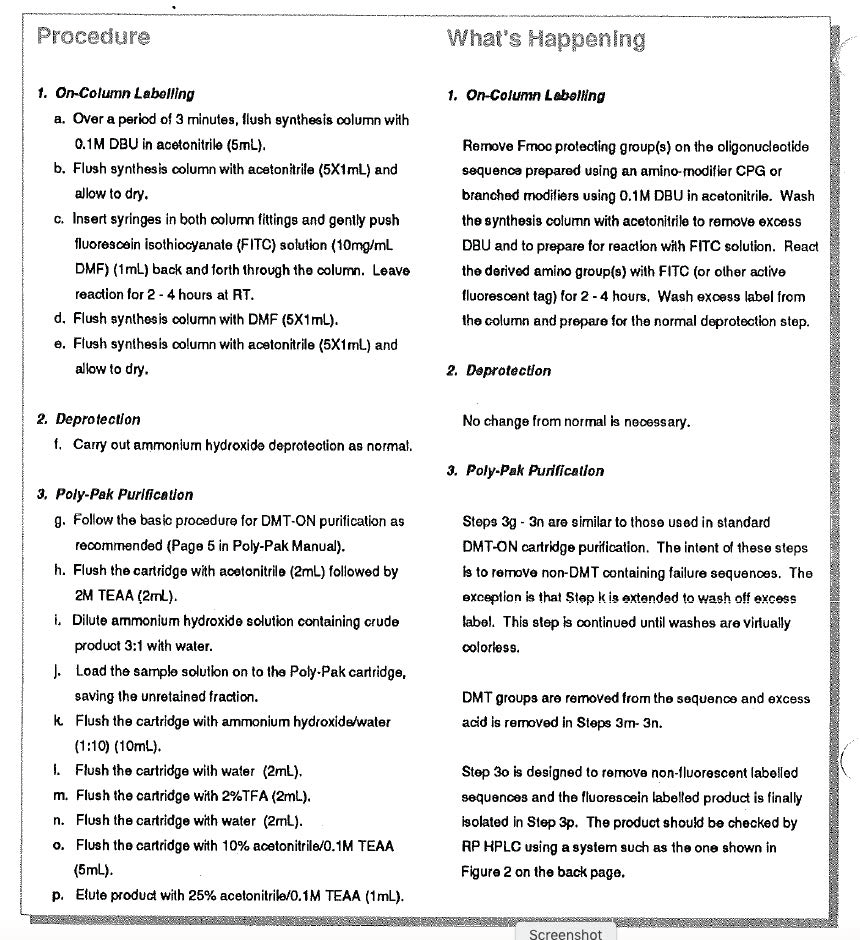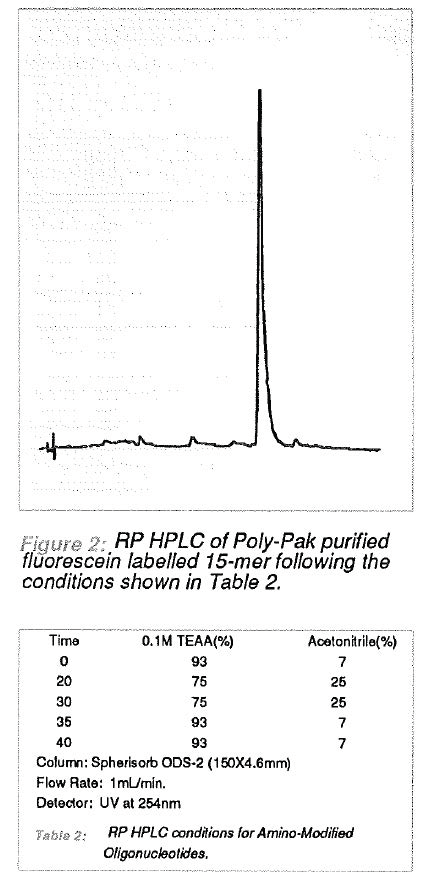Glen Report 4-22: Purification of Labelled Oligonucleotides Using Poly-Pak™ Cartridges
The use of oligonucleotides containing a fluorescent label has grown significantly in recent months with applications in sequencing and diagnostic probe development. In common with other manufacturers, Glen Research is almost to the point of releasing phosphoramidites of the most popular fluorescent labelling reagents for use directly on a DNA synthesizer. However, there will always be a need to label oligonucleotides with fluorescent tags which are not available as phosphoramidites.
The process currently used for labelling of oligonucleotides entails the incorporation of an amine functionality at the desired point(s) in the oligonucleotide. The amino-modified oligonucleotide may then be deprotected and purified as necessary. Conjugation of the desired fluorescent tag to the oligonucleotide is then carried out in aqueous buffer, followed by isolation and purification of the labelled oligonucleotide. There are two significant hurdles to overcome in this process. Reaction of a tag containing an active ester or acid chloride with amino groups in aqueous buffer is inefficient and is always accompanied by hydrolysis. These reactions do not, therefore, usually go to completion and the product is heavily contaminated with hydrolyzed fluorescent tag. Although a Poly-Pak procedure is available for purification of fluorescein labelled oligonucleotides produced in this manner, it may require significant development to extend to other labels.
Solid-phase labelling of oligonucleotides which are still attached to the DNA synthesis column has the advantage that the conjugation reaction can take place in anhydrous organic medium and the excess reagent can be simply removed by washing the support. It is even possible to label amino-modifier-CPG support prior to oligonucleotide synthesis or when the synthesis is complete. It must be stressed, however, that the tag in question must be stable under the conditions of ammonium hydroxide deprotection of the oligonucleotides following synthesis.

Reference
(1) C. Lehmann, Y.Z. Xu, C. Christodoulou, Z.K. Tan, and M.J. Gait, Nucleic Acids Res., 1989, 17, 2379.
Product Information
5'-Branched Modifer C3 (10-1950) and C7 (10-1957) have been discontined.
3'-Amino-Modifier C3 CPG (20-2950) has been discontined. Please see:
3'-PT-Amino-Modifier C3 CPG (20-2954)
3'-Amino-Modifier C7 CPG (20-2957) has been discontined. Please see:
3'-Amino-Modifier C7 CPG 1000 (20-2958)


